- FIBER OPTIC TRANSCEIVERS >10G Transceivers >10G SFP+ CWDM 40 km

10G SFP+ CWDM 40 km
ASCENTãs CWDM SFP+ transceivers are designed for use in 10-Gigabit Ethernet links with distances up to 80 km over single-mode fiber. These transceivers include a a PIN photo detector diode and uncooled CWDM DFB laser transmitter (1260 nm to 1370 nm) or an APD receiver and CWDM EML transmitter (1470 nm to 1610 nm). Digital diagnostic functions are available via an I2C interface. This module is designed for single-mode fiber and operates at wavelengths between 1270 nm to 1610 nm.
ã Up to 11.3 Gbps Data Links
ã Up to 40 km transmission on SMF
ã Uncooled CWDM DFB Laser and PIN receiver (1270 nm to 1370 nm)
ã CWDM EML transmitter and PIN receiver (1470 nm to 1610 nm)
ã Metal enclosure for lower EMI
ã 2-wire interface with integrated Digital Diagnostic monitoring
ã Hot-pluggable SFP+ footprint
ã Specifications compliant with SFF 8472
ã Compliant with SFP+ MSA with LC connector
ã Single 3.3 V power supply
ã Commercial/Industrial case operating temperature range: 0 ô¯C to +70 ô¯C / -40 ô¯C to +85 ô¯C
ã Without CDR (standard) or with CDR supported 9.95 Gb/s to 11.3Gb/s reference-free
Absolute Maximum Ratings
Parameter | Symbol | Min. | Typ. | Max. | Unit | Note |
Storage Temperature | Ts | ã40 | ã | 85 | ô¯C | |
Relative Humidity | RH | 5 | ã | 95 | % | |
Power Supply Voltage | VCC | ã0.3 | ã | 4 | V | |
Signal Input Voltage | Vccã0.3 | ã | Vcc+0.3 | V |
Recommended Operating Conditions
Parameter | Symbol | Min. | Typ. | Max. | Unit | Note | |
Case Operating Temperature | Tcase | 0 | ã | 70 | ô¯C | Commercial | |
ã40 | ã | 85 | ô¯C | Industrial | |||
Power Supply Voltage | VCC | 3.14 | 3.3 | 3.47 | V | ||
Power Supply Current | ICC | ã | 450 | mA | |||
Data Rate | BR | 10.3125 | 11.3 | Gbps | |||
Transmission Distance | TD | ã | 40 | km | |||
Coupled fiber | Singleãmode fiber | 9/125 ôçm SMF | |||||
Optical Characteristics
Parameter | Symbol | Min. | Typ. | Max. | Unit | Note |
Transmitter | ||||||
Average Launched Power (1270 nm to 1370 nm) | POUT | 0 | 5 | dBm | 1 | |
Average Launched Power (1470 nm to 1610 nm) | POUT | ã1 | 3 | dBm | 2 | |
Extinction Ratio (1270 nm to 1370 nm) | ER | 3.5 | dB | |||
Extinction Ratio (1470 nm to 1610 nm) | ER | 8.2 | dB | |||
Center Wavelength | ö£c | ö£cã6.5 | ö£c+6.5 | nm | 3 | |
Spectral Width (ã20dB) | ü | 1.0 | nm | |||
SMSR | 30 | dB | ||||
Transmitter OFF Output Power (1470 nm to 1610 nm) | Poff | ã30 | dBm | |||
Transmitter and Dispersion Penalty (1470 nm to 1610 nm) | TDP | 2.0 | dB | |||
Output Eye Mask | Compliant with IEEE 802.3ae | |||||
Receiver | ||||||
Input Optical Wavelength | ö£ | 1270 | 1610 | nm | ||
Receiver Sensitivity (1270 nm to 1370 nm) | Psen | ã15 | dBm | 4 | ||
Receiver Sensitivity (1470 nm to 1610 nm) | ã16 | 5 | ||||
Input Saturation Power (Overload) (1270 nm to 1370 nm) | Psat | 0.5 | dBm | |||
Input Saturation Power (Overload) (1470 nm to 1610 nm) | Psat | 0 | dBm | |||
LOS Assert (1270 nm to 1370 nm) | LOSA | ã30 | dBm | |||
LOS Assert (1470 nm to 1610 nm) | LOSA | ã35 | dBm | |||
LOS DeãAssert (1270 nm to 1370 nm) | LOSD | ã17 | dBm | |||
LOS DeãAssert (1470 nm to 1610 nm) | LOSD | ã26 | dBm | |||
LOS Detect Hysteresis | PHys | 0.5 | dB | |||
Notes:
1. 1. Class 1 Laser Safety per FDA/CDRH and IECã825ã1 regulations.
2. Launched power (avg.) is power coupled into a singleãmode fiber with master connector. (Before of Life)
3. For ö£c refer to wavelength selection
4. Measured with a PRBS 231ã1 test pattern, @ 10.325 Gb/s, BER<10ã12.
5. Measured with conformance test signal for BER = 10ã12 @ 10.3125 Gbps, PRBS = 231ã1, NRZ, Optical source with worst ER, Wavelength between 1470 nm and 1610 nm; back to back.
Electrical Characteristics
Parameter | Symbol | Min | Typ. | Max | Unit | Note |
Supply Voltage | Vcc | 3.14 | 3.3 | 3.46 | V | |
Supply Current (Note 1) | Icc | 450 | mA | 1270 nm to 1370 nm | ||
400 | mA | 1470 nm to 1610 nm | ||||
460 | mA | 1470 nm to 1610 nm (industrial) | ||||
430 | mA | 1470 nm to 1610 nm with CDR | ||||
490 | mA | 1470 nm to 1610 nm (industrial) with CDR | ||||
Transmitter | ||||||
Input Differential Impedance | Rin | 100 | öˋ | 2 | ||
Differential Data Input Swing (1270 nm to 1370 nm) | Vin, pp | 180 | 1200 | mV | ||
Differential Data Input Swing (1470 nm to 1610 nm) | Vin, pp | 180 | 700 | mV | ||
Transmit Disable Voltage (1270 nm to 1370 nm) | VDis | Vccã1.3 | Vcc | V | ||
Transmit Disable Voltage (1470 nm to 1610 nm) | VDis | 2.0 | Vcc | V | ||
Transmit Enable Voltage | VEN | Vee | Vee+ 0.8 | V | 3 | |
Transmit Disable Assert Time | 10 | ôçs | ||||
Receiver | ||||||
Differential Data Output Swing (1270 nm to 1370 nm) | Vout, pp | 300 | 850 | mV | 4 | |
Differential Data Output Swing (1470 nm to 1610 nm) | Vout, pp | 400 | 800 | mV | 4 | |
Data Output Rise Time (1270 nm to 1370 nm) | tr | 30 | ps | 5 | ||
Data Output Rise Time (1470 nm to 1610 nm) | tr | 30 | ps | 5 | ||
Data Output Fall Time (1270 nm to 1370 nm) | tf | 28 | ps | 5 | ||
Data Output Fall Time (1470 nm to 1610 nm) | tf | 28 | ps | 5 | ||
LOS Fault (1270 nm to 1370 nm) | VLOS_fault | Vccã1.3 | V | 6 | ||
LOS Output High Level (1470 nm to 1610 nm) | VLOSãH | 2.0 | VCCHOST | V | 6 | |
LOS Normal (1270 nm to 1370 nm) | VLOS_norm | Vee | Vee+0.8 | V | 6 | |
LOS Output Low Level (1470 nm to 1610 nm) | VLOSãL | Vee | Vee+0.8 | V | 6 |
Notes:
1. Measured with receive Pin = Psen, Vcc = 3.3 V, operation temperature range, without air flow.
2. Connected directly to TX data input pins. AC coupled.
3. Or open circuit.
4. Input 100 öˋ differential termination.
5. These are unfiltered 20 % to 80 % values.
6. Loss Of Signal is LVTTL. Logic 0 indicates normal operation; logic 1 indicates no signal detected.
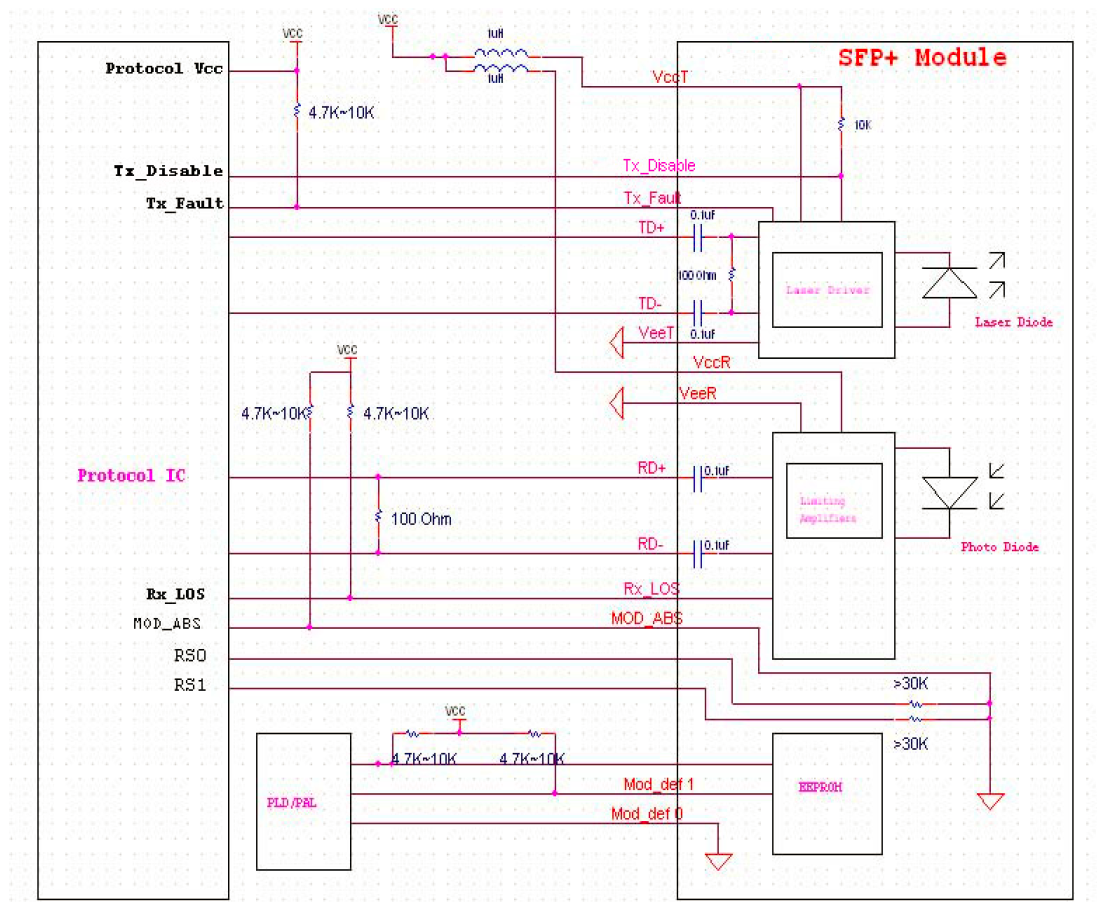

10G SFP+ LR 1310 nm 40 km
10 Gb/s 1310nm SFP+ 40 km Transceiver
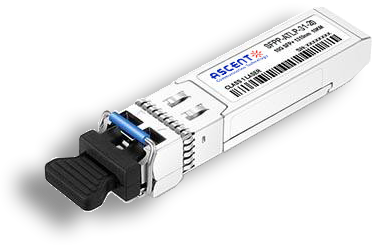
10G SFP+ LR 1310 nm 20 km
SFPP-ATLP-31-20 SFP+ Plug-in, 10Gbps, 20km, TX=1310/RX wide, on two single mode fibers, LC/PC Blue

10G SFP+ LR 1310 nm 10 km
SFPP-ATLP-31-10 SFP+ Plug-in, 10Gbps, 10km, TX=1310/RX wide, on two single mode fibers, LC/PC Blue

10G SFP+ LRM 1310 nm 2 km
SFPP-ATLP-31-02 10Gb/s 1310nm SFP+ 2 km Transceiver
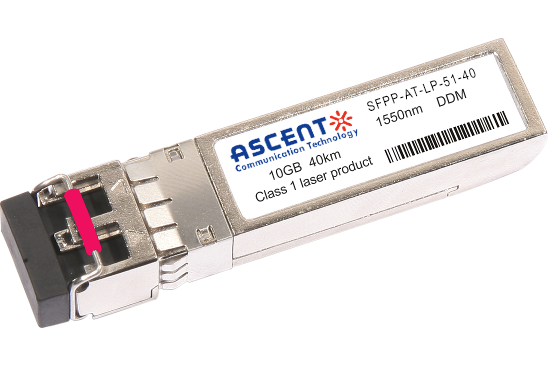
10G SFP+ ER 1550 nm 40 km
SFPP-ATLP-51-40 10 Gb/s 1550 nm SFP+ 40 km Transceiver
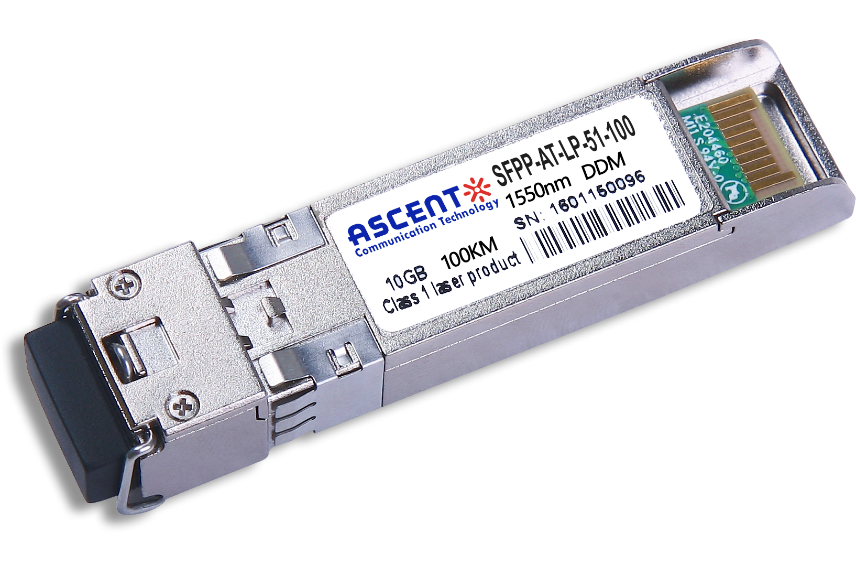
10G SFP+ CDR 1550 nm 100 km
SFPP-ATLP-51-100 10 Gb/s 1550 nm SFP+ 100 km Transceiver
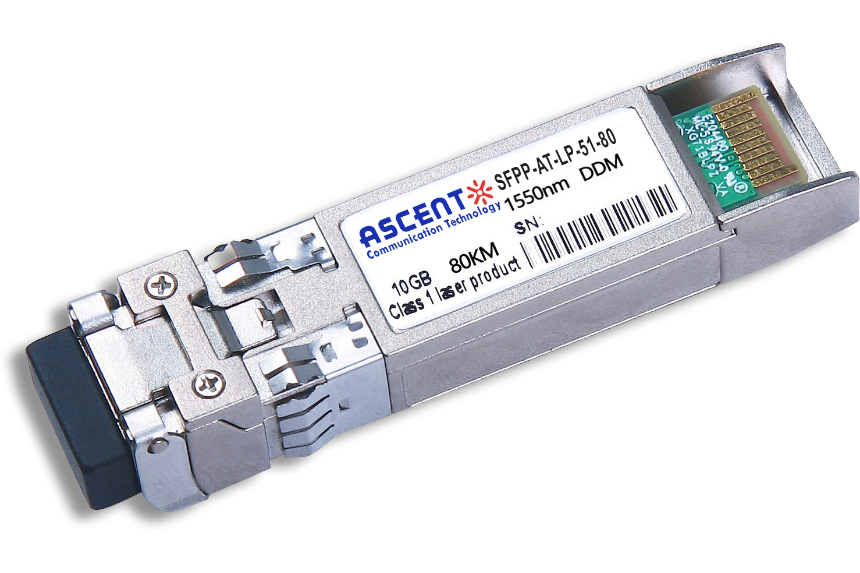
10G SFP+ ZR 1550 nm 80 km
SFPP-ATLP-51-80 10 Gb/s 1550 nm SFP+ 80 km Transceiver
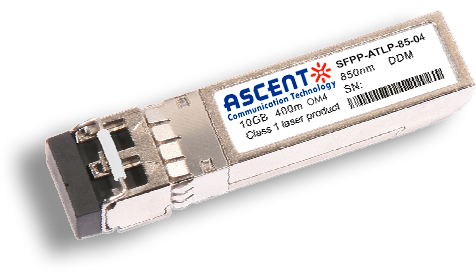
10G SFP+ 850 nm 400 m
10 Gb/s 850nm Multi-mode SFP+ Transceiver 400m
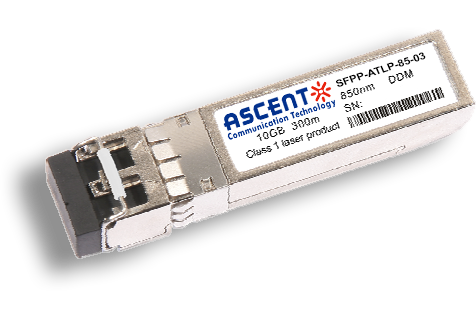
10G SFP+ 850 nm 300 m
SFPP-ATLP-85-03 10 Gb/s 850nm Multi-Mode SFP+ Transceiver

10G SFP+ Tunable DWDM 80 km
SFPP-LP-T99R-80 10 Gb/s Tunable DWDM SFP+ 80 km Transceiver

10G SFP+ DWDM 80 km
SFPP-ATLP-DXX-80 10 Gb/s DWDM SFP+ 80 km Transceiver

10G SFP+ DWDM 40 km
SFPP-ATLP-DXX-40 SFP+ Plug-in, 10Gbps, 40km, TX=ITU Ch xx (17 to 61) /RX wide, on two single mode fibers, LC/PC Blue
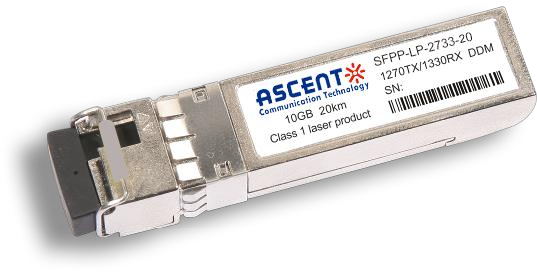
10G SFP+ CWDM 2733 20 km
10 Gb/s BIDI SFP+ Transceiver
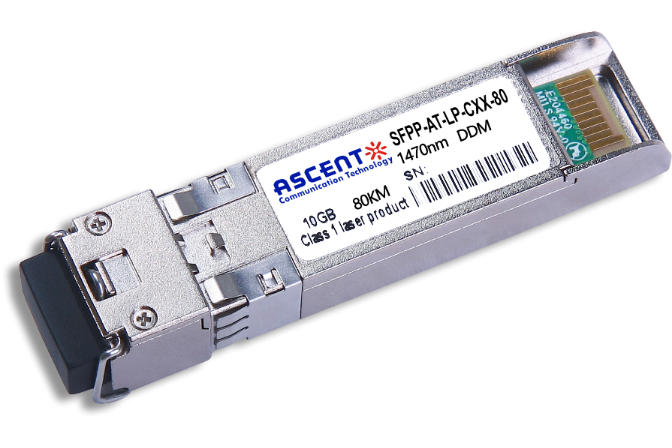
10G SFP+ CWDM 80 km
SFPP-ATLP-CXX-80 SFP+ Plug-in, 10 Gbps, 80 km, TX = CWDM Ch xx (1470ô nm to 1610 nm)/RX wide, on two single-mode fibers, LC/PC Blue.

10G SFP+ CWDM 2733 60 km
SFPP-AT-LP-XXXX-60D 10 Gb/s BIDI SFP+ 60 km Transceiver
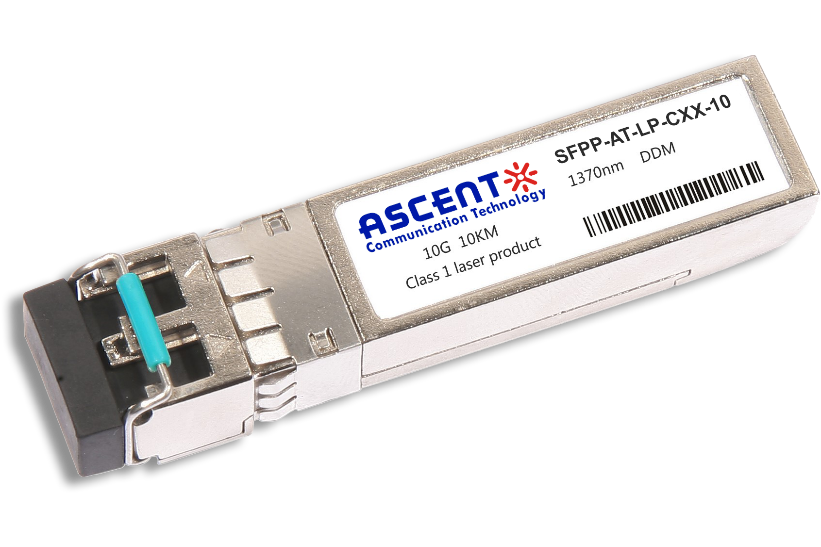
10G SFP+ CWDM 10 km
SFPP-ATLP-CXX-10 SFP+ Plug-in, 10 Gbps, 10 km, TX=CWDM Ch xx (1270 nm to 1610 nm)/RX wide, on two single-mode fibers, LC/PC Blue

10G SFP+ CWDM 2733 40 km
SFPP-AT-LP-XXXX-40 SFP+ Plug-in, 10Gbps, 40km, TX=1270/RX=1330 , on one single mode fibers, LC/PC Blue

10G SFP+ CWDM 2733 10 km
SFPP-LP-XXXX-10 SFP+ Plug-in, 10Gbps, 10km, TX=1270/RX=1330 , on one single mode fibers, LC/PC Blue

10G XFP BIDI 80KM
XFP 10 Gb/s BIDI Single-Mode 80 km Transceiver DDM

10G XFP BIDI 40KM
XFP 10 Gb/s BIDI Single-Mode 40 km Transceiver DDM

10G XFP BIDI 20KM
XFP 10 Gb/s BIDI Single-Mode 20 km Transceiver DDM

10G XFP BIDI 10KM
XFP 10 Gb/s BIDI Single-Mode 10 km Transceiver DDM

10G XFP LR 1310 nm 20 km
XFP-AT-LP-31-20 10 Gb/s 20 km XFP Transceiver

10G XFP LR 1310 nm 10 km
XFP-AT-LP-31-10 10 Gb/s 10 km XFP Transceiver
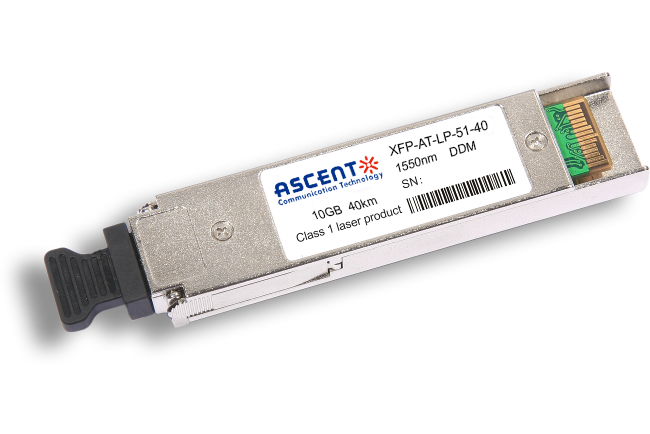
10G XFP ER 1550 nm 40 km
XFP-AT-LP-51-40 10 Gb/s 40 km XFP Optical Transceiver
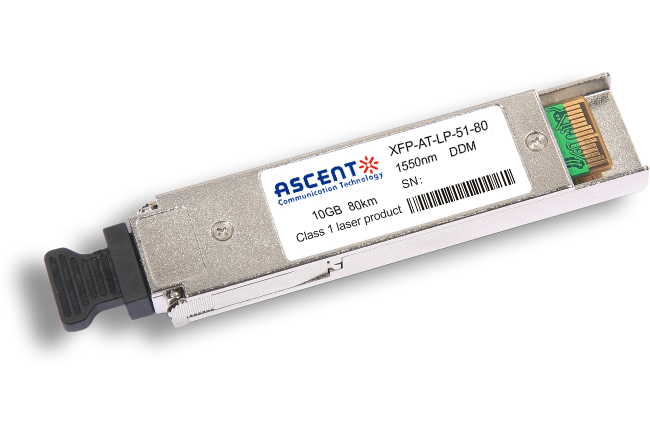
10G XFP ZR 1550 nm 80 km
XFP-AT-LP-51-80 10 Gb/s 80 km XFP Optical Transceiver

10G XFP CWDM 2633 60 km
XFP-ATLP-XXXX-60 10 Gb/s BIDI XFP 60 km Transceiver
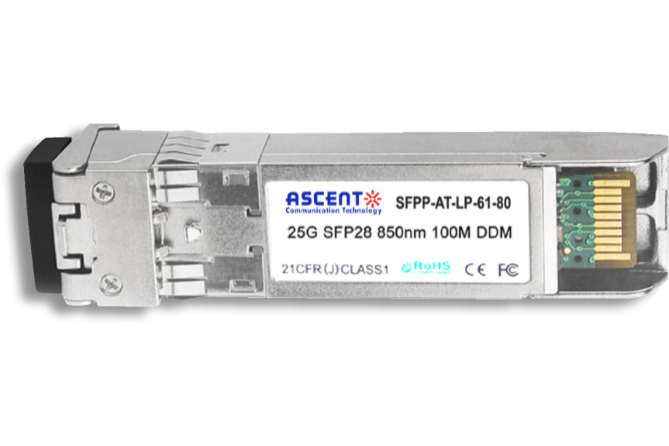
10G SFP+ CWDM 1610 80 km
SFPP-ATLP-61-80 SFP+ Plug-in, 10Gbps, 80km, TX=1610/RX wide, on two single mode fibers, LC/PC Blue
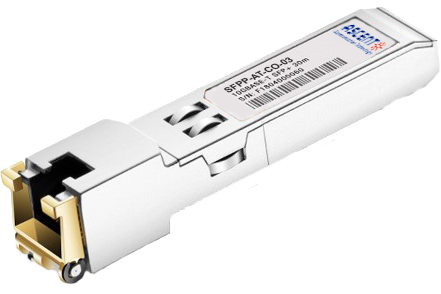
10G SFP+ Copper RJ45 30 m
SFPP-AT-CO-03 10GBASE-T SFP+ Copper RJ45 30m Transceiver

10G X2 850nm 300m
X2 10Gb/s 850nm Multi-mode Transceiver 300m

16G SFP+ FC 850 nm 100 m
SFPP-16-LP-85-01 16 Gb/s 850 nm SFP+ 100 m Transceiver

8.5G SFP+ SR 850 nm 150 m
SFPP-A8LP-85-015 8.5 Gb/s 850 nm Multi-Mode SFP+ Transceiver
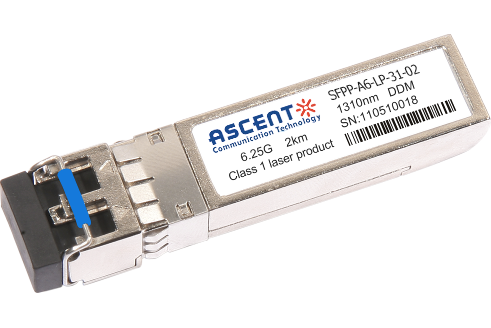
6.25G SFP+ LRM 1330 nm 2 km
SFPP-A6-LP-31-02 6.25 Gb/s Single-Mode SFP+ Transceiver
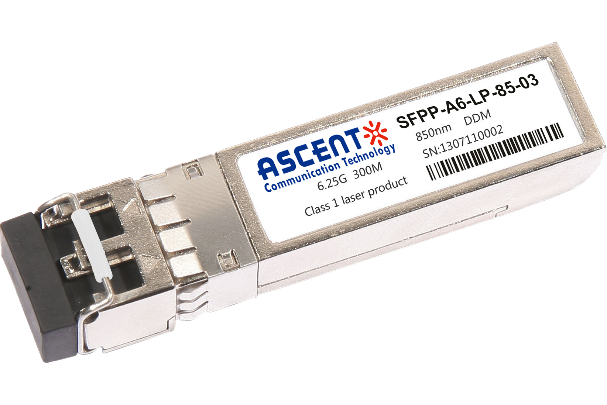
6.25G SFP+ SR 850 nm 300 m
SFPP-A6-LP-85-03 6.25 Gb/s 850 nm Multi-Mode SFP+ Transceiver
White Paper
Press Releases
Briefings 1
Briefings 2
Videos, etc.
QRG
Manual1
Manual2
Get in touch with our experts
Feedback